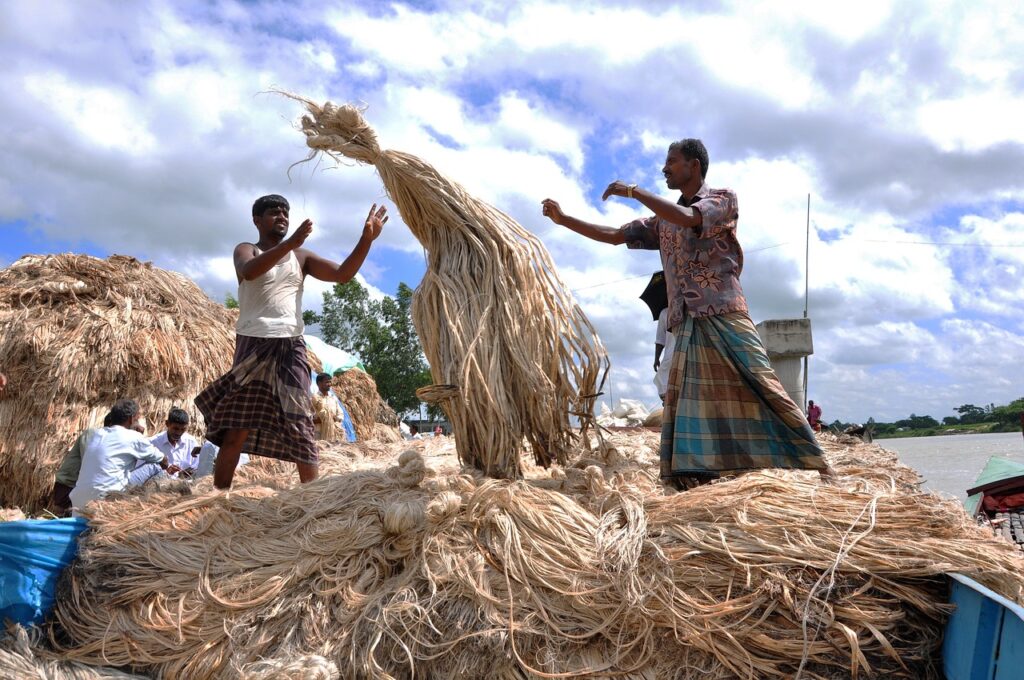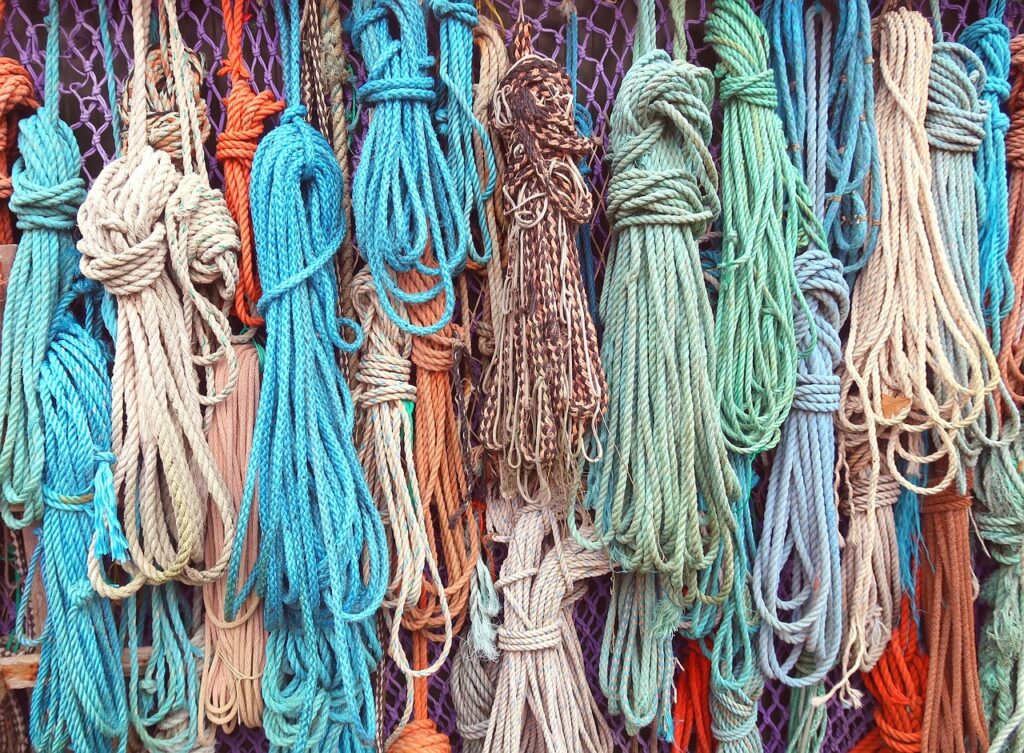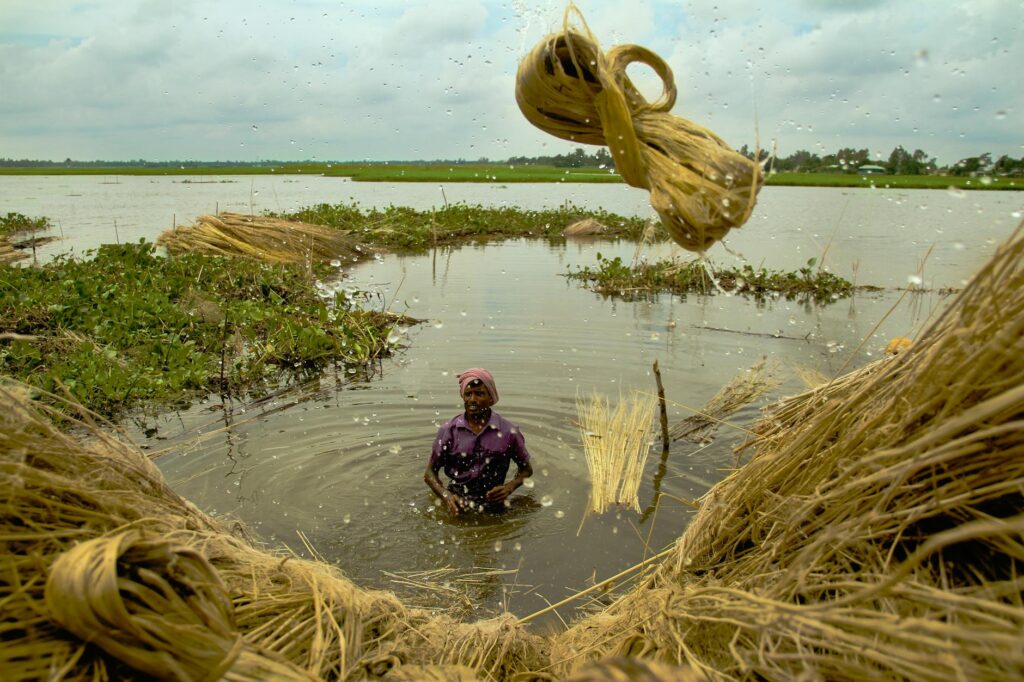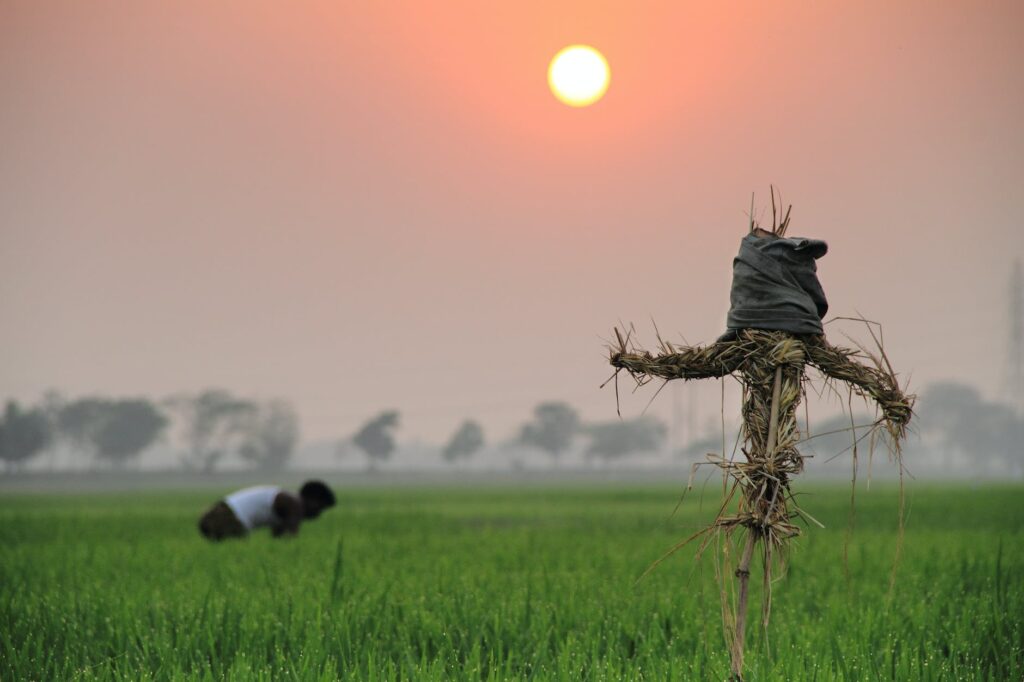Introduction
Ever wondered how that sturdy jute bag or exquisite carpet came into being? The fascinating journey of jute takes us through 10 distinct steps, each playing a vital role in transforming humble jute fibres from the fields into versatile fabrics and products that enrich our lives. Join us on this colourful adventure as we unravel the magical process of jute production.

Contents
Step 1: Cultivation
The journey begins in lush jute fields, where tall jute plants sway in the breeze under the warm sun, absorbing nutrients from the soil. Jute is cultivated in the fertile delta regions of Bangladesh, including districts such as Khulna, Jessore, Faridpur, and Jamalpur.
Step 2: Harvesting
Being a rainy season crop, jute is harvested from June to September, depending on the sowing cycle. When the time is right, skilled farmers harvest the jute plants, cutting them close to the ground and bundling them for the next stage.
Step 3: Retting
The harvested jute plants undergo retting, a natural process where they are soaked in water to break down the outer tissues and extract the precious fibres within.
Step 4: Stripping/Fiber Extraction
After retting, the jute stalks are stripped to reveal the golden fibres hidden within, ready to be transformed into the versatile material we know and love.
Step 5: Washing and Drying
The extracted jute fibres are thoroughly washed to remove impurities, then left to dry under the sun, giving them a fresh and clean appearance.
Step 6: Baling and Packing
The dried jute fibres are carefully baled and packed, ready to embark on the next phase of their journey to become valuable textiles.
Step 7: Jute Selecting
Skilled workers meticulously select the best jute fibres, ensuring only the finest and strongest fibres are chosen for further processing.
Step 8: Carding
In the carding process, the selected jute fibres are aligned, combed, and blended to create a uniform texture, preparing them for spinning.
Step 9: Spinning
The carded jute fibres are spun into strong threads or yarns using traditional spinning techniques, adding strength and durability to the fabric.
Step 10: Weaving
The spun jute yarns are woven together on looms, creating intricate patterns and designs that form the basis for various jute products.

Visit our Jute FAQs to learn more about the journey of jute.
The Journey of Jute Does Not End Here!
From the verdant fields to the weaving looms, the journey of jute is a testament to the skill, craftsmanship, and ingenuity of artisans who transform a humble plant into a versatile and eco-friendly material that brightens our homes and daily lives. But the production of jute fibres and twine is only the beginning in the journey of jute.
Depending on the grade and quality of the jute fibres, each type is put to use, either for industrial and commercial purposes to high-end consumer products. From Hessian sacks to coffee bags, rope for mooring ships, fashionable and durable sandals, bags and designer clothing items, the possibilities for jute are endless.
It’s a journey that combines tradition, innovation, and sustainability, culminating in the creation of jute products that resonate with style, substance, and a touch of nature’s beauty. Embark on the journey of jute and discover the magic woven into every fibre of this remarkable material.
At MASK Associates, we have over three decades of experience and are intimately involved in every part of the jute lifecycle from planing and harvesting to the manufacture of industrial, commercial and retail products.
MASK Associates is a leading exporter of top-tier jute and jute-based products from Bangladesh. Our commitment to excellence, innovation, and technology guarantees superior jute sourced from premier fibres globally.



